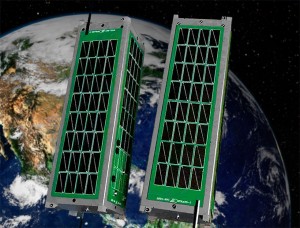
Engineers at the University of Surrey and Surrey Satellite Technology Limited (SSTL) are developing ‘STRaND-2’, a twin-satellite mission, to test a new in-orbit docking system. The system is based on the novel idea of using Microsoft’s XBOX Kinect technology to assist in the alignment during the docking phase. If successful, the new approach has the possibility to change the way space assets are built, maintained and upgraded.
Usually docking control systems are developed for costly missions to the International Space Station, and it has never been employed on the small scale that the researchers now are attempting. They have a vision of using relatively low cost nanosatellites as intelligent “space building blocks”, that could potentially be stacked together and reconfigured to build larger modular spacecrafts, if combined with low cost docking system.
SSTL Project Lead Shaun Kenyon explained: “We were really impressed by what MIT had done flying an autonomous model helicopter that used Kinect and asked ourselves: Why has no-one used this in space? Once you can launch low cost nanosatellites that dock together, the possibilities are endless – like space building blocks.”
The Surrey Training, Research and Nanosatellite Demonstrator (STRaND) already started the construction of the smartphone-powered STRaND-1 satellite that is now near completion. The STRaND-2 is the latest mission from this cutting edge research program. The almost identical twin satellites will each measure 30 cm (3 unit Cubesat) in length, and utilize components from the Microsoft XBOX Kinect games controller to provide the satellites with spatial awareness in all three axes by scanning the local area.
The STRaND-2 twins will be separated after launch. After the initial phase of system checks are completed, the two satellites will be commanded to perform a docking procedure. When they are maneuvered into close proximity of each other, the new Kinect-based docking system will provide the satellites with the needed data to align and preform the docking.
